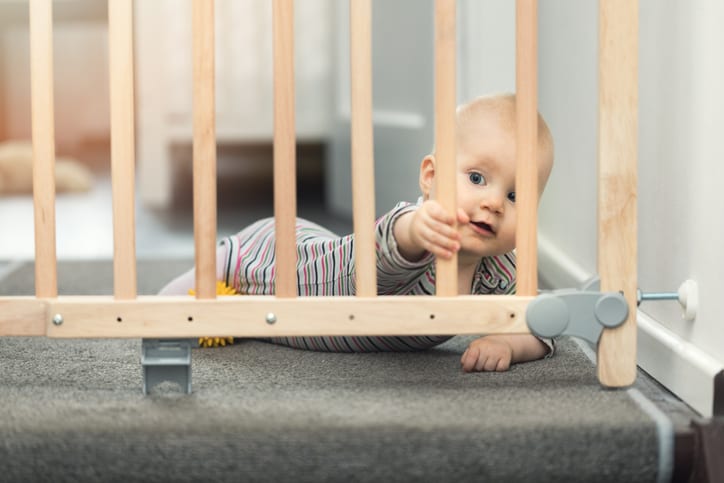When you were expecting your baby, you likely registered for electrical outlet covers and cabinet locks and then installed those safety devices as soon as your infant rolled over for the first time. Unfortunately, as children grow and move more and more, we may forget to update our safety measures.
At Alzein Pediatrics, we know kids are very curious by nature. While it’s important to encourage your child’s curiosity, that same curiosity can lead children of all ages to explore places and things that can be dangerous. More than a third of child injuries and death occur in the home, which should be the safest place of all. Your Alzein Pediatrics providers are here to remind you that, as children grow, your safety measures need to grow too.
Perhaps the easiest step in safeguarding your exploring child is keeping dangerous items secured and inaccessible. Toxic substances, household cleaners, detergents, and medicines should all be stored in cabinets with child-proof safety latches. Choking hazards such as batteries and magnets should be similarly secured and locked away. If cabinet latches aren’t realistic, storing the dangerous materials up high and out of your child’s high-use spaces will decrease the chances your explorer can stumble into danger.
Beyond making sure there’s nothing a curious child can discover and ingest, parents should get down on hands and knees and observe what kids can get into or reach. Make sure sharp objects like knives and scissors are in upper cabinets. Pan handles should be turned to the back to avoid your child pulling hot foods on top of themselves. Covers should be put on reachable oven and stove burner dials to prevent your child from turning on the gas.
Provide soft, stable and sturdy furnishings to cruise around when kids are learning to walk. Keep those electric outlets covered to conceal the tiny openings that might invite a curious finger or toy. Make sure anything your child is capable of climbing on or around, such as bookshelves, entertainment stands or dressers, are anchored to the wall with safety brackets. Protect your child from injuries caused by falling into the sharp edges of your furniture, fireplaces and wall corners by covering edges with foam covers, such as split pool noodles.
If you choose to keep firearms in the home, special care is demanded and required; these should be unloaded, locked and stored in a securely locked box or cabinet far out of reach of children.
There’s a whole world of new amazing things just on the other side of windows, but these can be a serious danger. Window screens will not support the weight of a child; window safety bars, to prevent windows from being opened more than a few inches, should be installed when windows are low enough for a child to access. Blinds, curtains, or shades with hanging cords can entangle and asphyxiate a child. Cords should be secured up and away from the child and, where possible, replaced with window treatments without hanging cords.
Home safety shouldn’t stop just because your child is no longer a blissfully unaware toddler. Doing a home safety check every few months should become a lifelong habit to continue to keep your whole family safe.
Do you have questions about child proofing your home? Message your Alzein Pediatrics provider through your patient portal and we will be happy to help!


